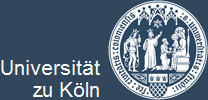Protist communities of microbial mats from extreme environments of five saline Andean lagoons at high elevation in the Atacama Desert
This page lists all metadata that was entered for this dataset. Only registered users of the CRC1211DB may download this file.
Feature
 Request download
Request download
Citation
Citation Options
Identification
| Title: | Main Title: Protist communities of microbial mats from extreme environments of five saline Andean lagoons at high elevation in the Atacama Desert |
| Description: | Abstract: Heterotrophic protists colonizing microbial mats have received little attention over the last years despite their important role in the microbial foodwebs, as those found in the remote Andean lagoons. We sampled these mats from different isolated aquatic systems distributed across the Altiplano, where extreme radiation and wide temperature changes prevail, potentially structuring the microbial communities. Here, we present the results of the metabarcoding from DNA and cDNA of protists (V9) in microbial mats across high-altitude lagoons of different salinity (4.3-34 PSU), including insights into their vertical stratification. We assessed the DNA-based protists detected across all the study sites. However, for the cDNA-based analysis, amplification was achieved primarily in three study sites with lower salinity. Sequence variants classified as the amoeboid rhizarian Rhogostoma and as the ciliate Euplotes were found to be common members of the heterotrophic protist community in both the DNA and cDNA- based analyses of the studied lagoons. They were accompanied by diatoms and kinetoplastids. As detected through DNA, different ASVs classified as Rhogostoma and Neobodo are the shared species between the most saline lagoons. Furthermore, our analyses point to salinity of the water column as a main driver influencing the structure of the protist communities at the five studied microbial mats. Interestingly, the sequence of ASVs classified as Rhogostoma are highly similar to the sequence from R. olyaorum, a species recently isolated from the Atacama Desert. Our results provide a first snapshot of the unculturable and active protist diversity thriving five athalossohaline lagoons from the Andean plateau. |
Responsible Party
| Creators: | Eduardo Acosta (Author), Frank Nitsche (Author), Christina Dorador (Author), Hartmut Arndt (Principal Investigator) |
| Funding Reference: | Deutsche Forschungsgemeinschaft (DFG): CRC 1211: Earth - Evolution at the Dry Limit |
| Publisher: | Frontiers |
| Publication Year: | 2023 |
Topic
| CRC1211 Topic: | Biology |
| Related Subprojects: | B2, B3 |
| Subject: | Keyword: Biodiversity |
| Geogr. Information Topic: | Biota |
File Details
| Filename: | Acosta_et_al_subm_version.pdf |
| Data Type: | Data Paper - NGS data |
| File Size: | 23.7 MB |
| Date: | Submitted: 16.12.2023 (pdf) |
| Mime Type: | application/pdf |
| Data Format: | |
| Language: | English |
| Status: | Completed |
Constraints
| Download Permission: | Only Project Members (Download Embargo will be lifted after project end) |
| General Access and Use Conditions: | According to the CRC1211DB data policy agreement. |
| Access Limitations: | According to the CRC1211DB data policy agreement. |
| Licence: | [Creative Commons] Attribution 4.0 International (CC BY 4.0) |
Geographic
Specific Information - Publication
| Publication Status: | Submitted |
| Review Status: | Peer reviewed |
| Publication Type: | Article |
| Article Type: | Journal |
| Source: | Frontiers of Microbiology |
| Number of Pages: | 25 (1 - 25) |
Metadata Details
| Metadata Creator: | Frank Nitsche |
| Metadata Created: | 21.12.2023 |
| Metadata Last Updated: | 21.12.2023 |
| Subproject: | B2 |
| Funding Phase: | 2 |
| Metadata Language: | English |
| Metadata Version: | V50 |
Metadata Export
| Metadata Schema: |
Dataset Statistics
| Page Visits: | 130 |
| Metadata Downloads: | 0 |
| Dataset Downloads: | 1 |
Dataset Activity
Feature
 Download
DownloadBy downloading this dataset you accept the license terms of [Creative Commons] Attribution 4.0 International (CC BY 4.0) and CRC1211DB Data Protection Statement
Adequate reference when this dataset will be discussed or used in any publication or presentation is mandatory. In this case please contact the dataset creator.
Adequate reference when this dataset will be discussed or used in any publication or presentation is mandatory. In this case please contact the dataset creator.





